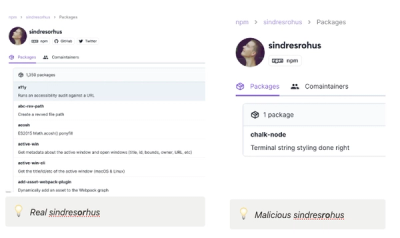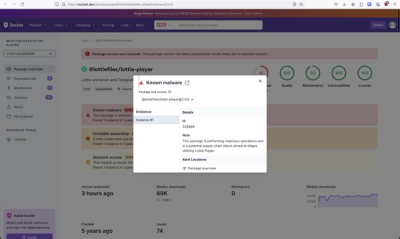lit-html
HTML templates, via JavaScript template literals
Overview
lit-html lets you write HTML templates with JavaScript template literals, and efficiently render and re-render those templates to DOM.
lit-html provides two main exports:
html: A JavaScript template tag used to produce a TemplateResult, which is a container for a template, and the values that should populate the template.render(): A function that renders a TemplateResult to a DOM container, such as an element or shadow root.
Examples
lit-html can be used standalone and directly to help manage some DOM:
const helloTemplate = (name) => html`<div>Hello ${name}!</div>`;
render(helloTemplate('Steve'), document.body);
render(helloTemplate('Kevin'), document.body);
But may also be common to use lit-html with a component system that calls render() for you, similar to React components:
(this example uses JS Class Fields, an upcoming specification)
class MyElement extends CoolLitMixin(HTMLElement) {
static observedProperties = ['message', 'name'];
title = `About lit-html`;
body = `It's got potential.`;
render() {
return html`
<h1>${this.title}</h1>
<p>${this.body}</p>
`;
}
}
Motivation
lit-html has four main goals:
- Efficient updates of previously rendered DOM.
- Expressiveness and easy access the JavaScript state that needs to be injected into DOM.
- Standard JavaScript without required build steps, understandable by standards-compliant tools.
- Very small size.
How it Works
lit-html utilizes some unique properties of HTML <template> elements and JavaScript tmplate literals. So it's helpful to understand them first.
Tagged Template Literals
A JavaScript template literal is a string literal that can have other JavaScript expressions embedded in it:
`My name is ${name}.`
A tagged template literal is preceded by a special template tag function:
let name = 'Monica';
tag`My name is ${name}.`
Tags are functions of the form: tag(strings, ...values), where strings is an immutable array of the literal parts, and values are the results of the embedded expressions.
In the preceding example, strings would be ['My name is ', '.'], and values would be ['Monica'].
HTML <template> Elements
A <template> element is an inert tree of DOM (script don't run, images don't load, custom elements aren't upgraded, etc) that can be efficiently cloned. It's usually used to tell the HTML parser that a section of the document must not be instantiated when parsed, but by code at a later time, but it can also be created imperatively with createElement and innerHTML.
Template Creation
The first time html is called on a particular template literal it does one-time setup work to create the template. It joins all the string parts with a special placeholder, "{{}}", then creates a <template> and sets its innherHTML to the result. The it walks the template's DOM and extracts the placeholder and remembers their location.
Every call to html returns a TemplateResult which contains the template created on the first call, and the expression values for the current call.
Template Rendering
render() takes a TemplateResult and renders it to a DOM container. On the initial render it clones the template, then walks it using the remembered placeholder positions, to create Parts.
A Part is a "hole" in the DOM where values can be injected. lit-html includes two type of parts by default: NodePart and AttributePart, which let you set text content and attribute values respectively. The Parts, container, and template they were created from are grouped together in an object called a TemplateInstance.
Rendering can be customized by providing alternate render() implementations whcih create different kinds of TemplateInstances and Parts, like PropertyPart and EventPart included in lib/lit-extended.ts which let templates set properties and event handlers on elements.
Performance
lit-html is designed to be lightweight and fast (though performance benchmarking is just starting).
- It utilizies the built-in JS and HTML parsers - it doesn't include any expression or markup parser of it's own.
- It only updates the dynamic parts of templates - static parts are untouched, not even walked for diffing, after the initial render.
- It uses cloning for initial render.
This should make the approach generally fast and small. Actual science and optimization and still TODOs at this time.
Features
Simple expressions and literals
Anything coercible to strings are supported:
const render = () => html`foo is ${foo}`;
Attribute-value Expressions
const render = () => html`<div class="${blue}"></div>`;
Safety
Because lit-html templates are parsed before values are set, they are safer than generating HTML via string-concatenation. Attributes are set via setAttribute() and node text via textContent, so the structure of template instances cannot be accidentally changed by expression values, and values are automatically escaped.
TODO: Add sanitization hooks to disallow inline event handlers, etc.
Case-sensitive Attribute Names
Attribute parts store both the HTML-parsed name and the raw name pulled from the string literal. This allows extensions, such as those that might set properties on elements using attribute syntax, to get case-sensitive names.
const render = () => html`<div someProp="${blue}"></div>`;
render().template.parts[0].rawName === 'someProp';
Arrays/Iterables
const items = [1, 2, 3];
const render = () => html`items = ${items.map((i) => `item: ${i})}`;
const items = {
a: 1,
b: 23,
c: 456,
};
const render = () => html`items = ${Object.entries(items)}`;
Nested Templates
const header = html`<h1>${title}</h1>`;
const render = () => html`
${header}
<p>And the body</p>
`;
Function Values / Directives
A function valued expression can be used for error handling and stateful rendering.
If an expression returns a function, the function is called with the Part its populating, inside a try/catch block.
This makes it safe from exceptions:
let data;
const render = () => html`foo = ${_=>data.foo}`;
Here, data.foo throws because data is undefined, but the rest of the template renders.
And is a useful extension point:
const render = () => html<div>${(part) => part.setValue((part.previousValue + 1) || 0)}</div>;
lit-html includes a few directives:
repeat(items, keyfn, template)
A loop that supports efficient re-ordering by using item keys.
Example:
const render = () => html`
<ul>
${repeat(items, (i) => i.id, (i, index) => html`
<li>${index}: ${i.name}</li>`)}
</ul>
`;
until(promise, defaultContent)
Renders defaultContent until promise resolves, then it renders the resolved value of promise.
Example:
const render = () => html`
<p>
${until(
fetch('content.txt').then((r) => r.text()),
html`<span>Loading...</span>`)}
</p>
`;
Promises
Promises are rendered when they resolve, leaving the previous value in place until they do. Races are handled, so that if an unresolved Promise is overwritten, it won't update the template when it finally resolves.
const render = () => html`
The response is ${fetch('sample.txt').then((r) => r.text())}.
`;
Composability
These features compose so you can render iterables of functions that return arrays of nested templates, etc...
Extensibility
lit-html is designed to be extended by more opinionated flavors of template syntaxes. For instance, lit-html doesn't support declarative event handlers or property setting out-of-the-box. A layer on top can add that while exposing the same API, by implementing a custom render() function.
Some examples of possible extensions:
- Property setting: Attribute expressions in templates could set properties on node.
- Event handlers: Specially named attributes can install event handlers.
- HTML values:
lit-html creates Text nodes by default. Extensions could allow setting innerHTML.
Status
lit-html is very new, under initial development, and not production-ready.
- It uses JavaScript modules, and there's no build set up yet, so out-of-the-box it only runs in Safari 10.1, Chrome Canary (coming in 61), and Firefox 54 (behind a flag).
- It has a growing test suite, but it has only been run manually on Chrome Canary, Safari 10.1 and Firefox 54.
- Much more test coverage is needed for complex templates, especially template composition and Function and Iterable values.
- It has not been benchmarked thouroughly yet.
- The API may change.
Even without a build configuration, lit-html minified with babili and gzipped measures in at less than 1.7k. We will strive to keep the size extremely small.
Benefits over HTML templates
lit-html has basically all of the benefits of HTML-in-JS systems like JSX, like:
Lighter weight
There's no need to load an expression parser and evaluator.
Seamless access to data
Since template literals are evaluated in JavaScript, their expressions have access to every variable in that scope, including globals, module and block scopes, and this inside methods.
If the main use of templates is to inject values into HTML, this breaks down a major barrier between templates and values.
Faster expression evaluation
They're just JavaScript expressions.
IDE support by default
In a type-checking environment like TypeScript, expressions are checked because they are just regular script. Hover-over docs and code-completion just work as well.
Case-sensitive parsing
Template literals preserve case, even though the HTML parser doesn't for attribute names. lit-html extracts the raw attribute names, which is useful for template syntaxes that use attribute syntax to set properties on elements.
Benefits over JSX
Native syntax
No tooling required. Understood by all JS editors and tools.
No VDOM overhead
lit-html only re-renders the dynamic parts of a template, so it doesn't produce a VDOM tree of the entire template contents, it just produces new values for each expression. By completely skipping static template parts, it saves work.
Scoped
JSX requires that the compiler be configured with the function to compile tags to. You can't mix two different JSX configurations in the same file.
The html template tag is just a variable, probably an imported function. You can have any number of similar functions in the same JS scope, or set html to different implementations.
Templates are values
JSX translates to function calls, and can't be manipulated on a per-template basis at runtime. lit-html produces a template object at runtime, which can be further processed by libraries like ShadyCSS.
CSS-compatible syntax
Because template literals use ${} as the expression delimiter, CSS's use of {} isn't interpreted as an expression. You can include style tags in your templates as you would expect:
html`
<style>
:host {
background: burlywood;
}
</style>
`
Future Work
Async Iterables Support
Async Iterables should be supported natively.
Higher-Order Templates examples
when(cond, then, else)
An if-directive that retains the then and else instances for fast switching between the two states, like <dom-if>.
Example:
const render = () => html`
${when(state === 'loading',
html`<div>Loading...</div>`,
html`<p>${message}</p>`)}
`;
guard(guardExpr, template)
Only re-renders an instance if the guard expression has changed since the last render.
Since all expressions in a template literal are evaluated when the literal is evaluated, you may want to only evaluate some expensive expressions when certain other values (probably it's dependencies change). Guard would memoize function and only call it if the guard expression changed.
Example:
const render = () => html`
<div>Current User: ${guard(user, () => user.getProfile())}</div>
`;



